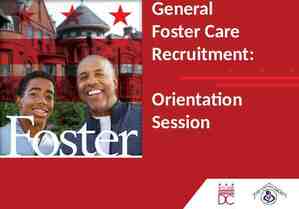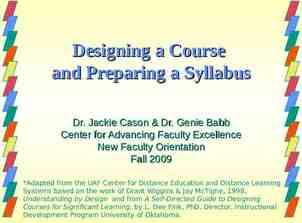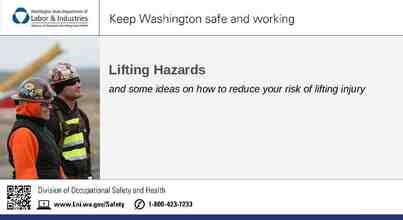Case Based Discussions Help to do it better.
15 Slides60.08 KB

Case Based Discussions Help to do it better.

What is a CBD? A CbD is essentially a structured interview between educator and trainee. The aim of CbD is to explore professional judgement exercised in clinical cases. The attributes required (objectives) to do this may include: recognising uncertainty/complexity application or use of medical knowledge application or use of ethical and legal frameworks ability to prioritise options, consider implications and justify decisions.

What are we planning to do in this session? Advice about how to do it well Observation of a CBD Benchmarking scoring Discussion

What is a CBD? Case Based Discussions (CBDs) are different than Random Case Analyses (RCAs) in that with CBDs you are meant to stick to the ‘here and now’ (or should I say ‘there and then’); you should avoid going into fantasy world with ‘what if .’ questions as you would do with RCAs. Be aware: if you don’t seem to be doing much CBDs with your GP trainee, ask yourself, ‘where is the avoidance coming from’: GP trainee or trainer: is there a training need here?

TOP TIPS

BEFORE YOU START Protected time is needed for CBDs. When a case is presented to you for CBD, make sure you’ve read it beforehand. You might want to read it an hour before you start or the day before. Anything longer than that and there is the real risk that you’ll forget all the details. Case selection is very important to success: tell your trainee to present you with cases that focus on the competencies they’ve not so far covered in previous CBDs or those that have previously been flagged as needing development. Cases in which there was an element of uncertainty or where a conflict in decision making are particularly good ones to choose. Work out which competency areas you’re going to assess – you don’t need to do all of them with each case; just pick 3-4.

BEFORE YOU START Now work out some questions relating to each competency domain. ‘CBD question maker’ available at www.bradfordvts.co.uk (click nMRCGP then CBD and you’ll find it in the downloads section there – which is also where this document is stored). The RCGP has formulated descriptors of what constitutes needs further development, competent and excellent for each competency area. It’s really important that you’re familiar with these. Look at the questions you’ve developed and the RCGP’s competency descriptors to help you figure out what sort of responses will indicate which grade/level of performance.

WHEN YOU START Ask the trainee to introduce the case briefly – try not to interrupt (2-3 mins). Another useful starting point is to ask them 3 things: – what issues did you feel the case raised – what issues did you feel needed resolving – what bits did you find challenging/difficult Clarify matters of fact e.g. ‘what did you mean when you told her .’ Take notes as they talk: especially of some of the things they say that relate to the competency domains you want to assess; explore those later. Set the agenda: State explicitly which competency domains you’re going to look at today. ‘Today, were going to use this case to explore three competency domains. The first is. and the second. and finally.’

WHEN YOU START Before asking the set of questions relating to a specific competency, signpost the competency being assessed. ‘Okay, let’s move on. The next set of questions I am going to ask you relate to the competency .’ Do not ask hypothetical questions like ‘What if’ scenarios. CBDs are testing what they actually did and why AND NOT what they would do in an ideal world! You can ask "What is your next step?” but what you must NOT do is take them down a line of hypothetical exploration. Instead ask for evidence of what they did ‘So, how did you actually phrase that? What did you actually say? What was the response to that?’

WHEN YOU START And/Or ask for justification of what they did ‘So what made you do that?’ ‘Why did you choose that option above all the others?’ ‘Did you use any guidance, protocols or evidence to guide you?’, ‘Where did you look for that?’, ‘What did it say?’ Once you’ve got enough evidence to rate the trainee on that competency, move onto the next one. There’s no point spending more time on it (c.f. rule of diminishing returns). But to make the assessment grade, you need to push the trainee to his/her limit (the point at which they start to struggle)

WHEN YOU START Don’t teach during the assessment phase of the process. Some trainers assess and teach at the same time. This disrupts the process, shifts the balance in terms of the time devoted to assessment and to teaching, and can result in cases taking an awfully long time to complete. Sometimes, time can be eaten up so much by this that trainers don’t end up assessing the other domains they were originally planning to do. This is unfair on the trainee. You can have a deeper discussion when the assessment bit is over. Stick to this rule: assess now, teach later. Continuously monitor TRAINEE’s verbal and non-verbal cues – if they look threatened or anxious, STOP and calm them down. CBDs are not about destroying the trainee or making them feel nervous. CBDs are about teasing out a true picture of what they did and why. That’s unlikely to happen if the trainee feels all negative inside. Also, if there’s a mismatch between their

AT THE END – feedback time Ask the trainee how they faired ‘Let’s look at each competency area we covered. practising holistically – how did you feel that went for you?’ For each competency state A) what they did well B) what they need to work on

AT THE END – feedback time The RCGP competency descriptors (mentioned earlier) will help you define what was specifically done well and what specifically needs working on. Discuss the methods the trainee might employ to strengthen weaker areas You might wish to ask the trainee: ‘What’s the most important things you’re going to take away from today’s session?’ ‘What do you need to follow up?’ Now make record it in their e-portfolio. Do this jointly so that what is written is shared and therefore owned.

AT THE END – feedback time Remember, feedback should be: a) constructive (not destructive) b) balanced (if you feel you have not been balanced enough, you might want to reinforce some good behaviour before you end the session). This is especially important when strengths are scarce! Otherwise the TRAINEE may end up hating these sessions and thus avoidance behaviour or defensiveness. If there is a lot of defensiveness when you constructively criticise, you might want to go back to basics the next time you do an CBDs: set a safe educational environment AND revisit JoHari’s window to ensure you both know the whole point of doing CBDs (assessment of where they are at, defining where they need to be, uncovering learning needs to help them get there, and hopefully this will make them even better).

Benchmarking a case






